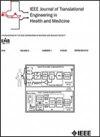Letter to the Editor on “From Concept to Clinic: Living Labs and Regulatory Sandboxes for Health System Digitalization and the Integration of Innovative Devices Into Clinical Workflows”
IF 4.4
3区 医学
Q2 ENGINEERING, BIOMEDICAL
IEEE Journal of Translational Engineering in Health and Medicine-Jtehm
Pub Date : 2025-03-12
DOI:10.1109/JTEHM.2025.3557508
引用次数: 0
Abstract
Digital health and AI-enabled technologies hold the promise of addressing gaps in healthcare, but balancing rapid market access with the need for safe, functional, and user-centered solutions remains a challenge致编辑关于“从概念到临床:卫生系统数字化的生活实验室和监管沙盒以及将创新设备集成到临床工作流程”的信
数字医疗和人工智能技术有望解决医疗保健方面的差距,但在快速进入市场与对安全、功能性和以用户为中心的解决方案的需求之间取得平衡仍然是一项挑战。设备开发和市场批准的监管要求需要详细的文档和预先确定的协议,这可能会限制开发人员对患者和医疗保健专业人员[1]、[3]、[4]进行迭代改进和实际测试所需的适应性,而这种方法对数字和支持人工智能的技术非常有益。因此,诸如临床工作流程集成、互操作性和与实际使用设备的可用性等关键因素往往被忽视或以粗略的方式解决[10]。
本文章由计算机程序翻译,如有差异,请以英文原文为准。
求助全文
约1分钟内获得全文
求助全文
来源期刊

IEEE Journal of Translational Engineering in Health and Medicine-Jtehm
Engineering-Biomedical Engineering
CiteScore
7.40
自引率
2.90%
发文量
65
审稿时长
27 weeks
期刊介绍:
The IEEE Journal of Translational Engineering in Health and Medicine is an open access product that bridges the engineering and clinical worlds, focusing on detailed descriptions of advanced technical solutions to a clinical need along with clinical results and healthcare relevance. The journal provides a platform for state-of-the-art technology directions in the interdisciplinary field of biomedical engineering, embracing engineering, life sciences and medicine. A unique aspect of the journal is its ability to foster a collaboration between physicians and engineers for presenting broad and compelling real world technological and engineering solutions that can be implemented in the interest of improving quality of patient care and treatment outcomes, thereby reducing costs and improving efficiency. The journal provides an active forum for clinical research and relevant state-of the-art technology for members of all the IEEE societies that have an interest in biomedical engineering as well as reaching out directly to physicians and the medical community through the American Medical Association (AMA) and other clinical societies. The scope of the journal includes, but is not limited, to topics on: Medical devices, healthcare delivery systems, global healthcare initiatives, and ICT based services; Technological relevance to healthcare cost reduction; Technology affecting healthcare management, decision-making, and policy; Advanced technical work that is applied to solving specific clinical needs.
 求助内容:
求助内容: 应助结果提醒方式:
应助结果提醒方式:


